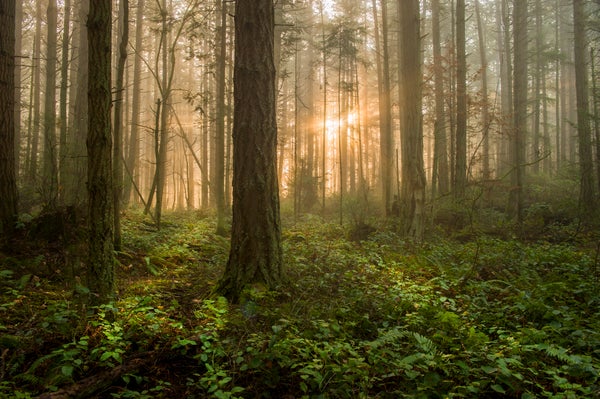CLIMATEWIRE | Forests around the world are losing their resilience and becoming more vulnerable to disturbances as the planet warms. That’s especially true for ecosystems in tropical, temperate and dry parts of the world, according to a new study.
When a forest loses resilience, it means it’s gradually losing its ability to bounce back after fires, droughts, logging and other disruptive events, said the study, published on July 13 in Nature. Past a certain point, some forests may approach a kind of tipping point — a threshold that launches them into a rapid decline.
And beyond that, some studies suggest, a forest may not be able to fully recover at all. It may instead transform into some other ecosystem entirely, like a grassland or savanna.
On supporting science journalism
If you're enjoying this article, consider supporting our award-winning journalism by subscribing. By purchasing a subscription you are helping to ensure the future of impactful stories about the discoveries and ideas shaping our world today.
The concept of forest tipping points has become a hot topic in climate science in recent years. The vast Amazon rainforest is one of the biggest subjects of concern.
Large swaths of the Amazon already are suffering from the effects of long-term deforestation. Now, many scientists warn that climate change is making things worse. Declining rainfall, increasing drought and devastating wildfires are taking their toll on the iconic rainforest.
Some modeling studies have suggested that continued planetary warming — paired with ongoing deforestation and other human disturbances — eventually will push the Amazon past a point of no return. Beyond this threshold, the ecosystem could enter an unstoppable spiral of decline, eventually transforming from lush rainforest into grassy savanna.
There’s considerable debate about where, exactly, that tipping point may lie. A recent major report from the Intergovernmental Panel on Climate Change, which summarizes the best and most up-to-date climate science from around the world, said that an Amazon tipping point could be possible before the end of the century. But it also notes there’s still a lot of uncertainty about how likely that is.
Shortly after the IPCC report was released, an eyebrow-raising study in the journal Nature Climate Change warned that the Amazon has been losing resilience for at least a couple of decades (Climatewire, March 8). That means it’s already inching closer to its purported tipping point — though the authors of the study say immediate action to protect the rainforest and curb climate change still could save it.
Now, scientists are turning their gaze to the rest of the world. This week’s study looks at forests all over the globe, from the warm tropics to the boreal forests of northern Canada and Russia.
Led by Giovanni Forzieri of the University of Florence in Italy, the research team utilized machine learning techniques to analyze 20 years of data on global vegetation, from 2000 to 2020. They used satellite data on ecosystem productivity — an indicator of the health of the trees — to evaluate the speed and ease with which forests are able to recover from disturbances.
Many northern boreal forests, they found, actually are growing in resilience. Warming and increasing carbon dioxide rates may be offsetting other negative effects of climate change in these regions, the researchers suggest — at least for now.
Still, even some boreal forests are experiencing localized resilience losses, including parts of central Russia and western Canada.
Elsewhere the picture is bleak. Forests in the tropical, temperate and arid regions of the world are experiencing significant declines in resilience.
Intact forests — forests that aren’t managed or harvested by humans — tend to have higher baseline levels of resilience to start. Still, both intact forests and managed forests are losing their resilience over time at similar rates.
That suggests to scientists that the declines aren’t related to human management techniques. They’re probably driven by climate change.
Reprinted from E&E News with permission from POLITICO, LLC. Copyright 2022. E&E News provides essential news for energy and environment professionals.
